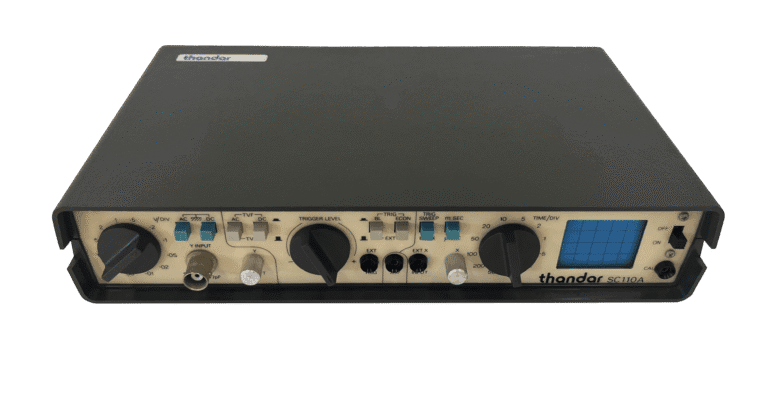Oscilloscopes

This portable oscilloscope displayed changing electrical signals over time, offering both engineers and advanced hobbyists a compact and affordable alternative to larger workbench models. Nearly identical to the earlier Sinclair SC110, it reflects the company’s rebranding from Sinclair Electronics to Thandar Electronics in the early 1980s—following an earlier transition from Sinclair Radionics. Thandar brochures continued to reference the original Sinclair factory site in England, reassuring customers that the instruments were still made in the same location, with familiar designs, pricing, and support.

This compact unit allowed analogue oscilloscopes to capture and display a digital “snapshot” of fast-moving electrical signals. Acting as an external storage interface, the TD201 converted incoming waveforms into digital data that could be frozen, measured, and analysed—especially useful for capturing transient or one-off events. It connected directly to an oscilloscope’s inputs and triggered on specific signal conditions. As a plug-in accessory, it expanded the usefulness of existing test equipment without the cost of a full digital oscilloscope.

The SC110A was a portable oscilloscope used to visualise how electrical signals change over time. An upgraded version of the earlier SC110, it offered finer control and a wider measurement range. Users could view both very fast and slower signals, adjusting how much of the waveform appeared on screen—from microseconds to half a second per division. Its increased vertical sensitivity allowed for the detection of small or large voltage changes, making it useful for a broader range of circuit testing tasks. Designed for flexibility, it remained light, battery-powered, and easy to use in the field.
